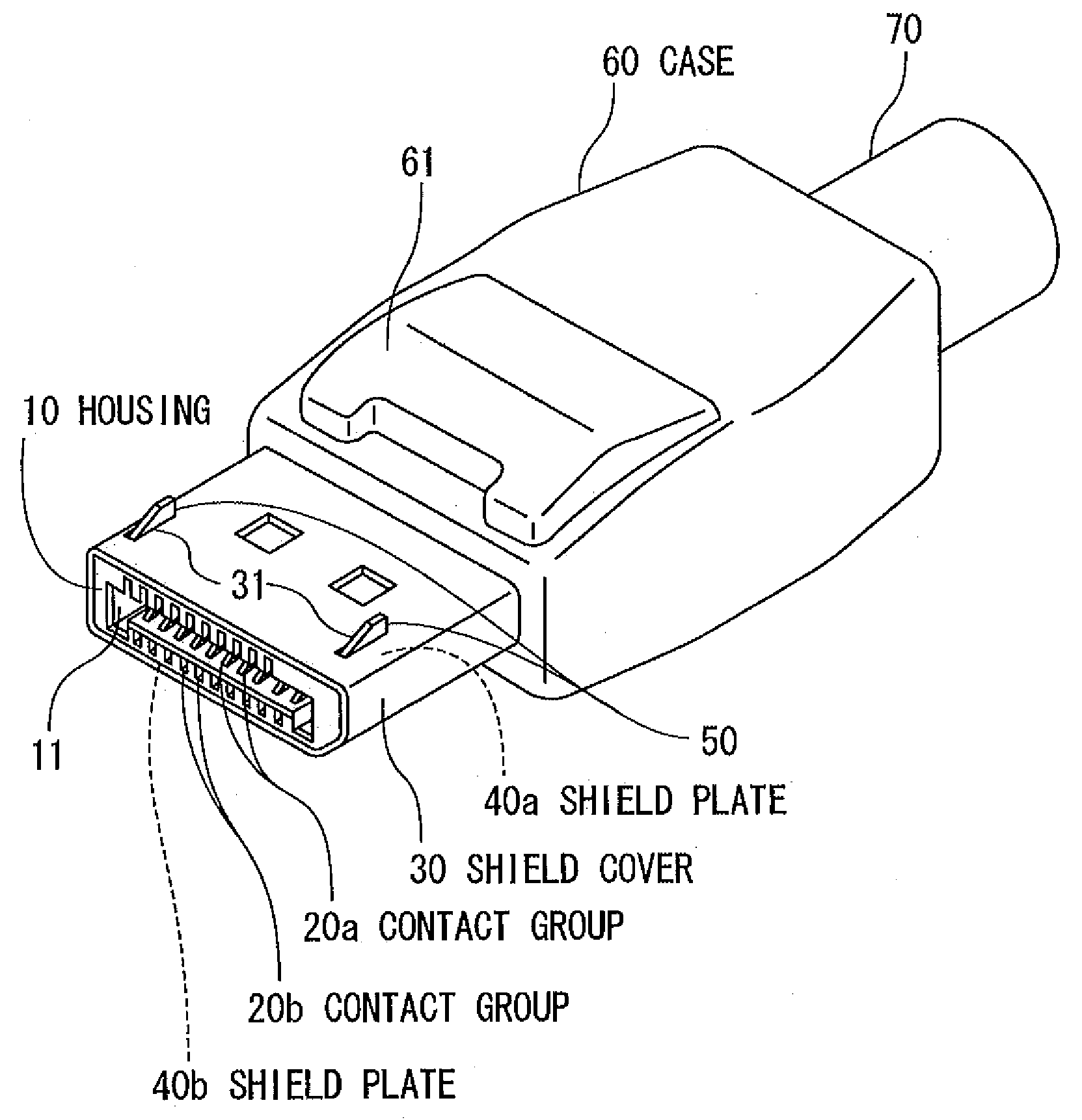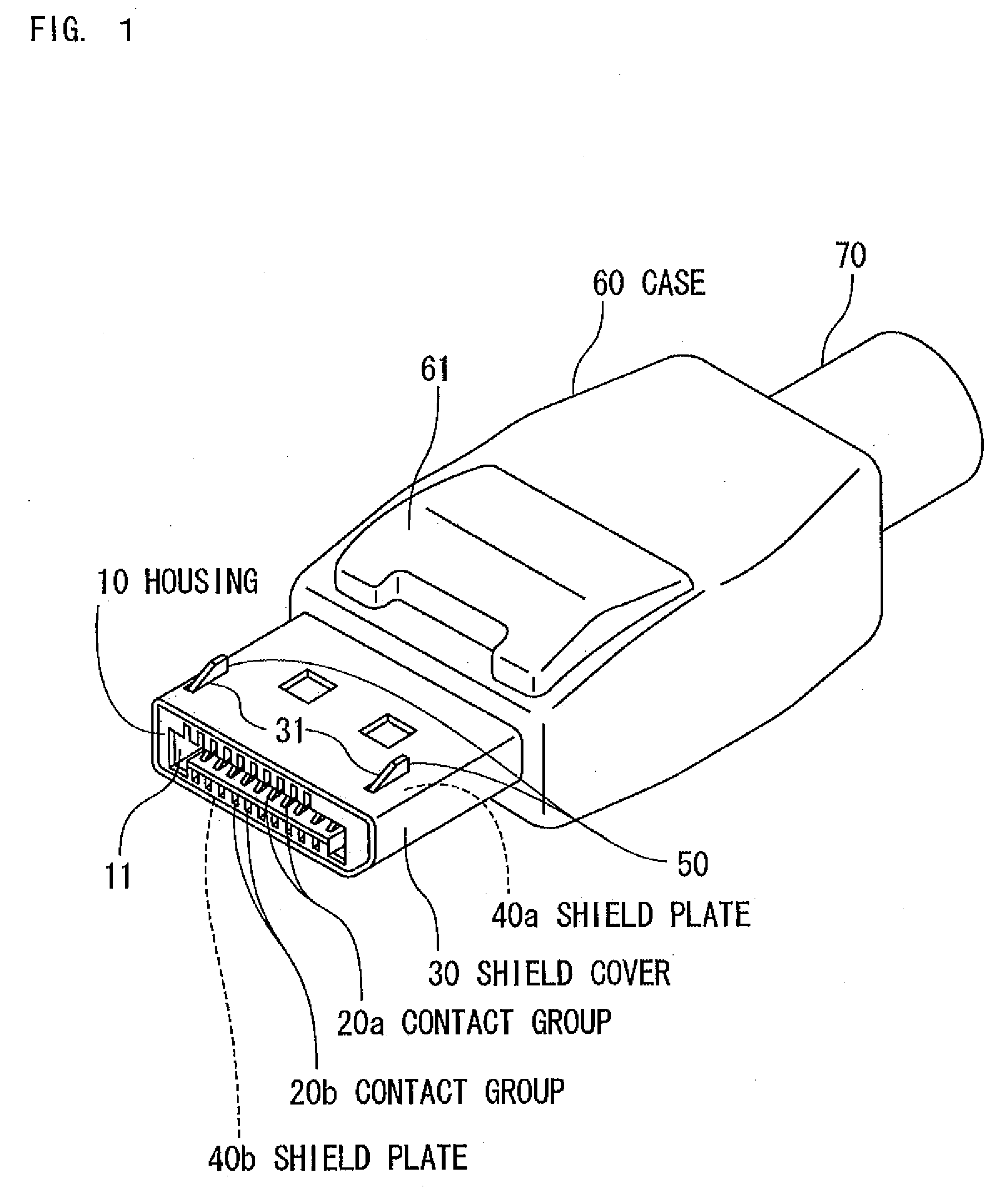Electric connector
a technology of electric connectors and connectors, which is applied in the direction of coupling device connections, coupling parts engagement/disengagement, two-part coupling devices, etc., can solve the problems of inability to cover the contact portions of contacts with plastics materials, disadvantages in transmission characteristics of conventional connectors, and inability to remove plastics materials surrounding the press fitted and fixed portions. , to achieve the effect of adjusting the capacitance of the particular contact, easy matching and further improving the transmission characteristics
- Summary
- Abstract
- Description
- Claims
- Application Information
AI Technical Summary
Benefits of technology
Problems solved by technology
Method used
Image
Examples
Embodiment Construction
[0032]An electric connector according to an embodiment of the present invention will be described below with reference to the drawings.
[0033]As shown in FIGS. 1 to 7, the electric connector described herein is a plug connector to be attached to a leading end of a bulk cable (a cable 70) for high-speed signal transmission. The electric connector includes a housing 10, contact groups 20a and 20b, a shield cover 30, shield plates 40a and 40b, and a case 60.
[0034]The housing 10 is an insulative member made of plastics material in a substantially rectangular solid shape, with its front side adapted to be engaged with a mating connector A (see FIG. 2) which is provided in an electronic device and the like. As shown in FIGS. 1 and 3, the housing 10 accommodates the contact groups 20a and 20b, which are laterally arranged in two rows shifted in phase from each other so as to correspond to contacts (not shown) of the mating connector A. As shown in FIGS. 4 and 5, an opening 11 to receive a p...
PUM
 Login to View More
Login to View More Abstract
Description
Claims
Application Information
 Login to View More
Login to View More - R&D
- Intellectual Property
- Life Sciences
- Materials
- Tech Scout
- Unparalleled Data Quality
- Higher Quality Content
- 60% Fewer Hallucinations
Browse by: Latest US Patents, China's latest patents, Technical Efficacy Thesaurus, Application Domain, Technology Topic, Popular Technical Reports.
© 2025 PatSnap. All rights reserved.Legal|Privacy policy|Modern Slavery Act Transparency Statement|Sitemap|About US| Contact US: help@patsnap.com



